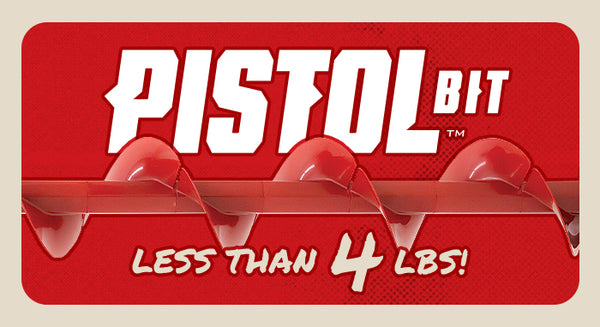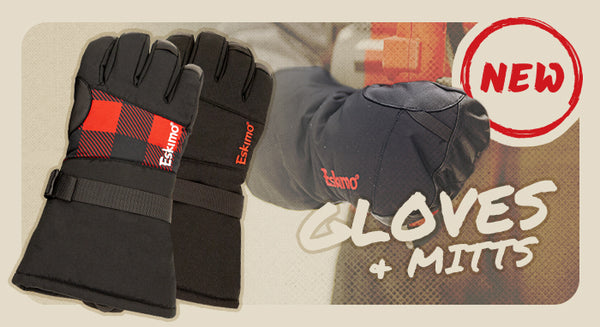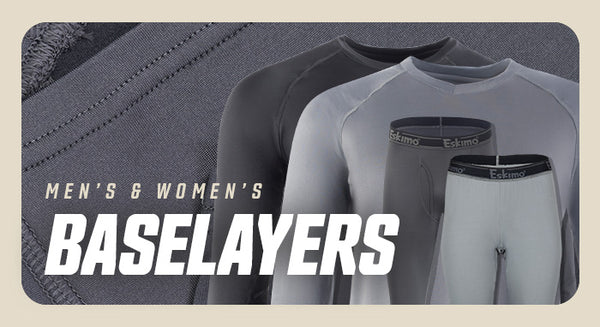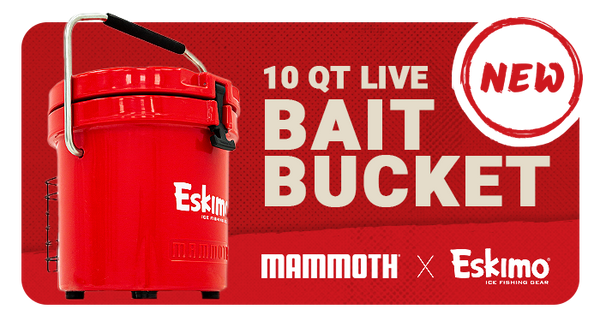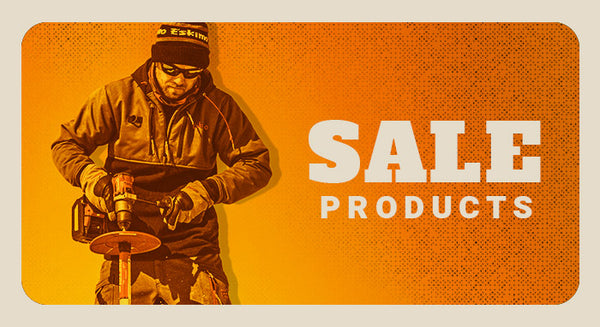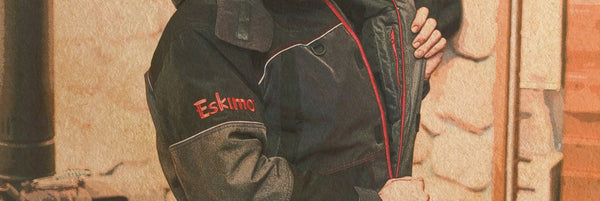Matt Mascarenas | Pro Staff
Every time I get in front of a group of new ice anglers, whether it’s a seminar at a State Park, or an in-store event, I always get asked the same question: “What’s the most important thing I need to get to started ice fishing?” My answer always surprises some if not most. Outside of rods, reels, line and bait, I think having a good way to stay warm and comfortable on the ice can be one of, if not the most important thing to consider when getting started ice fishing. Let’s look at this simply; you’re typically sitting on a block of ice, in the winter elements, often for hours on end. If you’re not comfortable and properly dressed, you will likely be miserable and not enjoy your day.
Staying warm starts with planning your clothing. You need to take into account that you may often be walking a couple miles, trudging through snow, setting up shelters, and drilling holes, all of which can cause a good amount sweat. Also, something l like to do is to put my bibs on at home versus at the lake, which can make a big difference in the amount of sweat you produce before you even get out on the ice. Moisture management should definitely be a major consideration when planning what you will wear.
A basic layering system for cold weather is made up of three layers: your baselayer, a mid layer and the outer layer. Headwear, handwear and footwear are all important too. Simply put, each layer has a main purpose.
Baselayer
WICKS SWEAT OFF YOUR SKIN
Your baselayer is what touches your skin. Many of us have heard this before, but things like cotton or a cotton-rich blend can make getting warm in cold situations difficult after sweating or getting wet. I like to look for a wool or synthetic blend long sleeve shirt/long underwear. You want something that wicks away moisture and potentially something that can hold heat even if it’s wet. I choose the weight and feel of my baselayer depending on the weather conditions and the type of fishing I plan on doing that day. If I am going to be moving a lot and the weather isn’t too cold, then a light baselayer or to wick the sweat is all I need. If I don’t plan to move much and it is extreme conditions, then I use something thicker but still something that will wick the sweat. Most of the time I spend a lot of time moving around the ice, and I tend to get a good sweat on. You might see a theme here: I try to avoid sweating as much as possible, and if I sweat, I have good moisture wicking base-layers to get it off my body to keep me feeling dry, warm and comfortable.
Mid Layer
INSULATES TO SHIELD YOU FROM THE COLD
Now on to the mid layer. For the top, I like a fleece or lighter weight insulated jacket or vest. I am a big fan of something with a hood, though I’m a big vest guy also! The mid layer top is an important layer to plan for as I remove it several times during the day as I get sweaty because of either drilling holes or moving around. As far as the bottoms go for the mid layer, I am a huge fan of wool pants or any cold weather type of “sweat pants”. I’d avoid any type of jeans/denim at all costs; Jeans don’t provide mobility or wicking properties desired in a good mid layer. In really cold situations where I know I will not be moving as much and will be trying to stay as warm as possible; I will go with wool or synthetic long underwear as a baselayer and something like the Eskimo Shanty Boss sweat pants as a mid-layer. In more moderate temperature situations, I just run my mid layer pants and skip the heavy long underwear. Generally, a good rule of thumb with baselayers is to find the warmth you need, with minimal bulk.
Outer Layer
PROTECTS YOU FROM THE ELEMENTS (SNOW, RAIN, WIND, ETC.)
Next, the outer layer, which is all about protection from the elements. In this layer I look for something to keep me dry and keep the wind out. There are many options to consider with your outer layer. Many folks still wear insulated work style coveralls and bibs, which are a good warm and durable option, but also get heavy when wet and don’t float. I encourage all ice anglers to take a look at the many float-assist suits designed for ice fishing and winter activity, if they haven’t already. This is one of the few expenses that I consider a must, primarily because it provides a huge safety benefit.
The most important thing is to find a suit with the amount of insulation to fit your climate and activity level. If you are a run and gun type angler like me, I absolutely love the weight and the mobility of wearing the Legend ice suit. The key is the ability to layer up and down based on conditions. I’ve worn the Eskimo Lockout suit for a couple seasons and this last season I was in the Eskimo Legend suit. What I enjoyed most about the latest generation of Eskimo Suits is the Uplyft™ breathable Flotation. Prior float suits I’ve owned were great, but I would sweat in them. The Uplyft flotation allows more breathability, which helps regulate body temp by avoiding moisture buildup. If you think about it, there is little point in wearing all of these high quality wicking base and mid layers, just to have moisture trapped against your body by your suit.
Now for the footwear which is the easiest for me because my only goal in this situation is keeping my feet dry! I start by wearing a pair of wool socks. For boots I like to find something that’s waterproof and around 800 grams of insulation. I also wear slip on shoes to try and avoid my feet sweating on the drive to the lake. I don’t go too heavy on the insulation grams because I am a little “lieutenant Dan” when it comes to my feet if they get wet and cold my day is done!
That’s my system in a nutshell. There are certainly a number of great clothing options that I like, and every season I see clothes get better. The most important thing is to realize that all pieces of clothing are part of a system, and you can interchange pieces and layers to meet your needs for a specific day or conditions. As the years go by and you accumulate more items, the options can become endless. Whatever you choose, the most important part about planning your system is to remember that it is YOUR system. The biggest thing to consider is the way YOU fish and what works for you and your situation.


